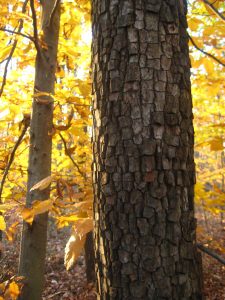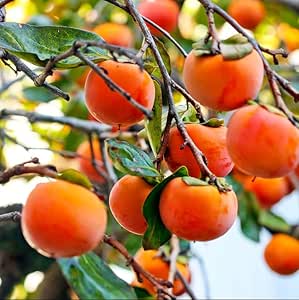
Along the winding shores of the South River and throughout the maritime landscape of Annapolis, there stands a tree that tells a story as rich as the waters of the Chesapeake Bay itself. The American Persimmon (Diospyros virginiana) has been a silent witness to centuries of change in this region, its gnarly bark and spreading canopy a testament to the endurance of native species in our evolving ecosystem.
A Tree Deeply Rooted in Local History
Long before colonial ships sailed into the Chesapeake, Native American tribes of the region recognized the persimmon as a valuable food source. The Algonquin peoples called it “putchamin,” and the tree’s fruits were an essential part of their autumn harvest. These indigenous communities taught early settlers about the importance of waiting for the first frost before harvesting the persimmons – a lesson many newcomers learned the hard way, as unripe persimmons are notoriously astringent.
The Persimmon’s Place in the Bay’s Ecosystem
Around Annapolis and the South River, persimmon trees often dot the transitional zones between upland forests and tidal marshes. Their presence is particularly notable in areas where sandy soils meet the brackish waters of the Chesapeake’s tributaries. These trees have adapted remarkably well to our region’s specific conditions, developing a tolerance for both occasional salt spray and the clay-heavy soils common to the Coastal Plain.
The ecological value of our local persimmons extends far beyond their edible fruits. Throughout the year, these trees serve as crucial habitat nodes in the Chesapeake Bay watershed. White-tailed deer browse on the leaves and twigs, while opossums, raccoons, and foxes feast on fallen fruits. The trees also provide essential perching and nesting sites for various bird species, including our resident mockingbirds and catbirds.
Finding Persimmons Around Annapolis
For those interested in seeking out these remarkable trees, several locations around Annapolis offer reliable viewing opportunities:
- Along the hiking trails of Quiet Waters Park, where mature specimens can be found near the South River overlooks
- In the historic gardens of the William Paca House, where persimmons have been carefully preserved as part of the colonial landscape
- Throughout the woodlands of Beverly-Triton Nature Park, particularly along the bay-facing edges

The persimmon’s influence on local culture continues to evolve. Modern foragers seek out the sweet autumn fruits for traditional recipes, while conservation groups have begun incorporating these native trees into restoration projects around the bay. Local breweries have even experimented with persimmon-infused ales, connecting this ancient fruit with contemporary tastes.
As climate change affects the Chesapeake Bay region, the American Persimmon may play an increasingly important role in coastal forest resilience. These trees’ ability to withstand both drought and occasional flooding makes them valuable assets in shoreline stabilization efforts. Additionally, their deep root systems help prevent erosion along the South River and other waterways, contributing to the overall health of the bay’s ecosystem.
Experiencing the Persimmon Calendar
For those interested in experiencing the full cycle of the American Persimmon, here’s what to look for throughout the year in the Annapolis region:
- Spring: Delicate, bell-shaped flowers emerge, attracting native pollinators
- Summer: Dense, dark green foliage provides shade and wildlife habitat
- Fall: Fruits ripen and develop their characteristic orange color, especially after the first frost
- Winter: The distinctive blocky bark pattern becomes more visible, and persistent fruits attract winter wildlife
The American Persimmon stands as a living link between the Chesapeake Bay’s past and present. As we continue to navigate the challenges of environmental conservation and cultural preservation around Annapolis and the South River, these remarkable trees remind us of the enduring connections between land, water, and human community in this special corner of the Chesapeake Bay
